What is an Area of Concern?
In 1987, the joint U.S.-Canada Great Lakes Water Quality Agreement established the Area of Concern (AOC) program. This program, specific to the Great Lakes Region, defines AOCs as “geographic areas where significant impairment of beneficial uses has occurred as a result of human activities at the local level.”
The Maumee Area of Concern
The Maumee AOC designation listed 10 beneficial use impairments due in part to significant habitat alteration, industrial impacts, uncontrolled sewage overflows, and struggling wildlife in the greater Toledo and outlying areas. Watersheds included in this AOC are the lower Maumee River, Ottawa River, Swan Creek, Toussaint River, Crane Creek, and numerous smaller rivers and tributaries. The Maumee AOC is one of the largest AOCs across the Great Lakes.
Since its AOC designation, an active group of community members and representatives from local nonprofit organizations, businesses and government have worked to address the Maumee AOC’s designated BUIs. The Maumee RAP (Remedial Action Plan) Advisory Committee, MRAC, set up originally under TMACOG, was the group charged with developing a Remedial Action Plan. In 2015, this body was renamed and reorganized into the stand-alone Maumee AOC Advisory Committee (MAAC).
The MAAC Today
Today, the MAAC works as an advisory committee to Ohio EPA, identifying actions to improve fishable, swimmable and drinkable waters within the AOC. Among many responsibilities, MAAC members help to identify valuable restoration projects and recommend projects to agencies for funding. This ongoing collaboration of partners is supported by the MAAC’s facilitating organization, Partners for Clean Streams (PCS). PCS also organizes volunteers and secures other funding for programs that support active engagement with the community and advance water quality and habitat benefits in the AOC.
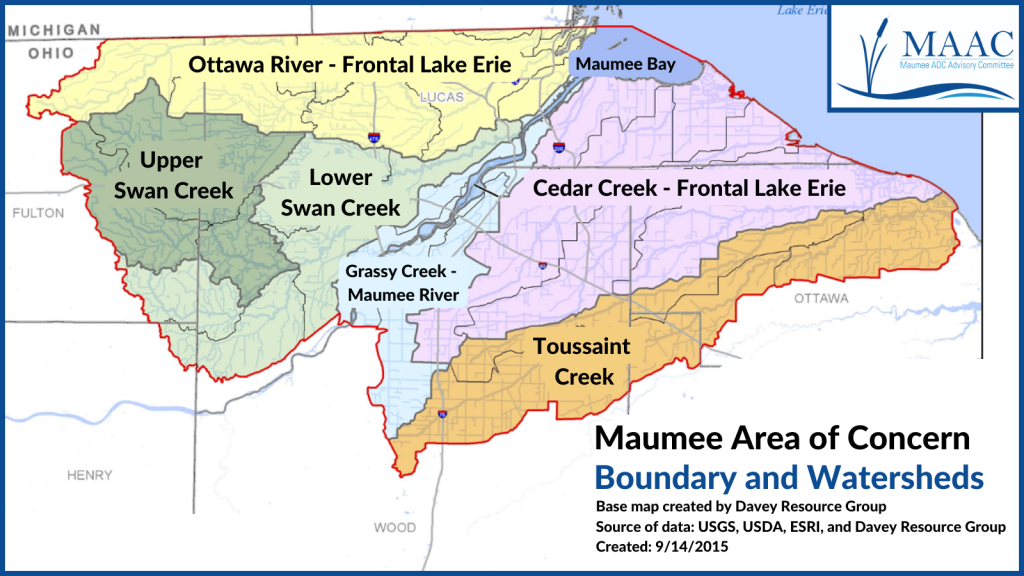
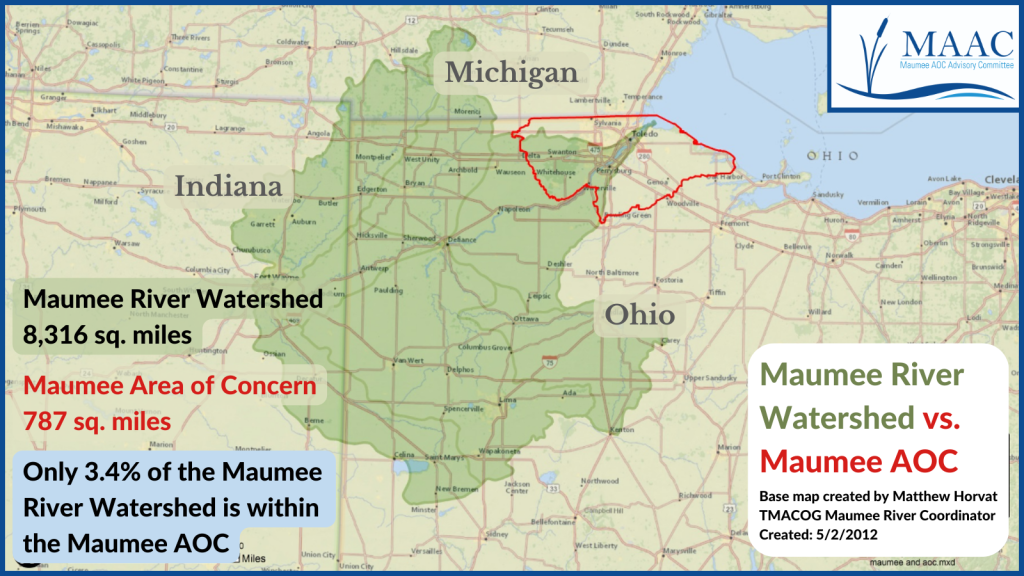
Timeline
-
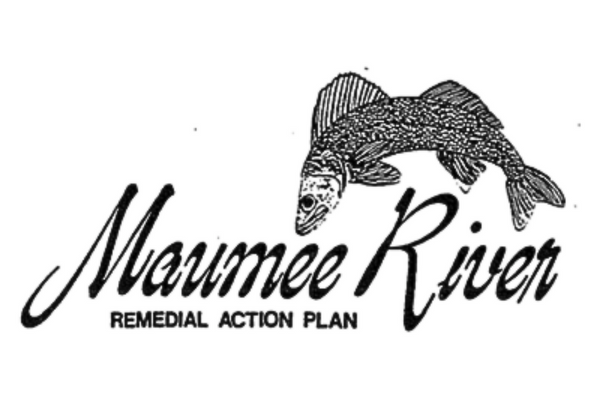
Maumee Remedial Action Plan (RAP) formed under TMACOG
1987The Maumee Area of Concern (Maumee AOC) was established in 1987 in accordance with the Great Lakes Water Quality Agreement; overseen by the International Joint Commission, which defined Areas of Concern. The Maumee RAP Committee was set up originally under TMACOG (Toledo Metropolitan Area Council of Governments), made up of government officials, businesses, industries, universities, and other interested individuals working towards fishable, swimmable, and drinkable waters. (Select the years below to view more key milestones.)
-
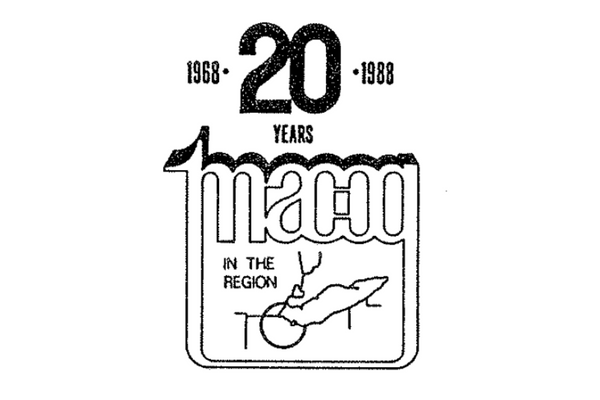
The Maumee RAP Stage 1 Investigation Report Completed
1990This is the first step required after any AOC listing. At this time, the report was finished and approved by the International Joint Commission.
-
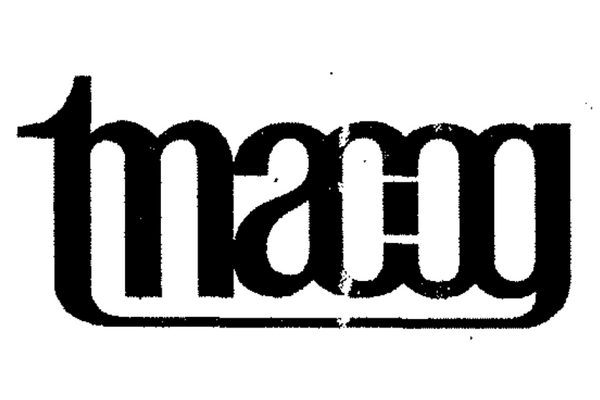
Regular Maumee RAP Committee Meetings Underway
1992The Maumee RAP Committee began meeting regularly under the TMACOG umbrella, with many action groups focused on challenging impairments. In 2007, the committee began meeting under the newly-formed nonprofit Partners for Clean Streams.
-
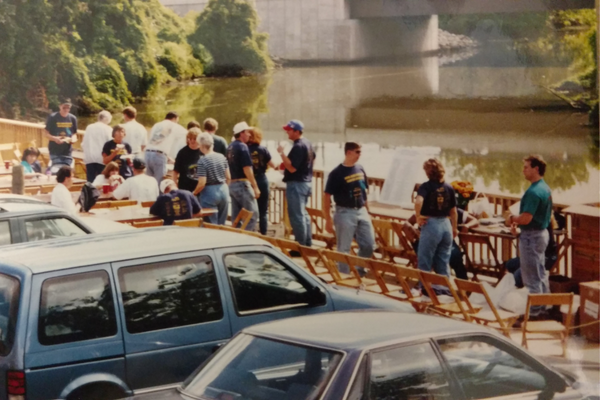
The 1st Clean Your Streams Day
1997The 1st Clean Your Streams Day was organized by Maumee RAP Committee members to work towards the removal of BUI 11: Degradation of Aesthetics. Sixty volunteers cleaned up sites along the Ottawa River and Swan Creek.
-
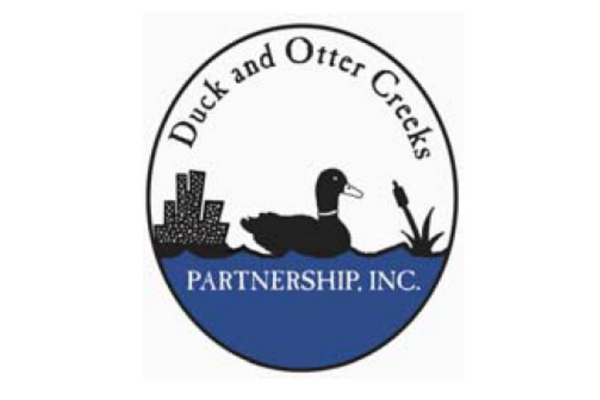
Duck and Otter Creeks Partnership Formed
1999Duck and Otter Creeks Partnership formed as a separate entity to address contaminated sediments in those watersheds within the AOC. This laid the foundation for future Great Lakes Legacy Act (GLLA) removals to address historical contamination issues in Otter Creek.
-
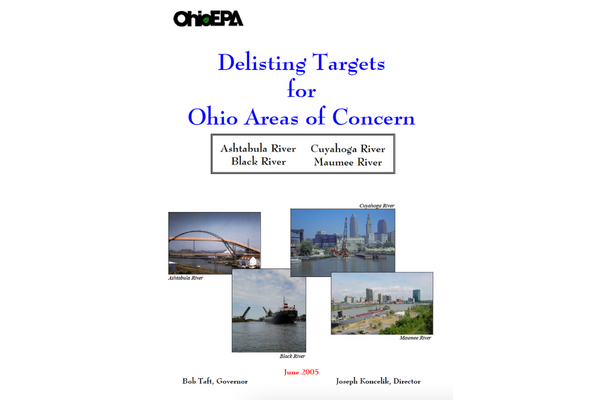
First Edition of Ohio Delisting Guidance and Restoration Targets
2005This document, from Ohio EPA, lays out the path for delisting Ohio’s AOCs, giving guidance for the removal of BUIs and describing steps for tracking BUI status. It has undergone numerous revisions since its first publication.
-
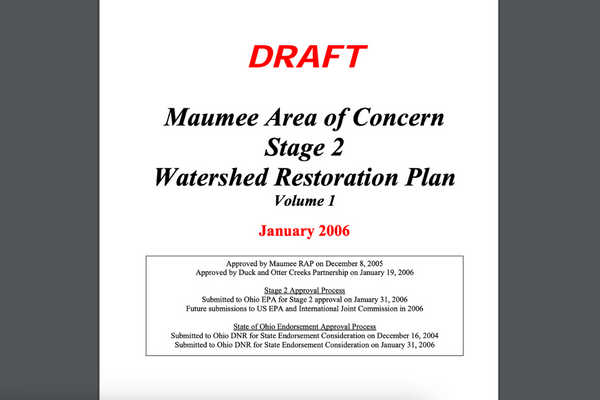
Maumee RAP Releases Maumee AOC Stage 2 Watershed Restoration Plan
2006Between 2004-2006, the Maumee RAP partners undertook an ambitious effort to create the Watershed Restoration Plan, combining requirements from the International Joint Commission’s AOC program and Ohio’s watershed program for a comprehensive document. The group developed a Stage 2 Remedial Action Plan or RAP. This regional plan helped guide projects focused on restoring the impacted waterways.
-
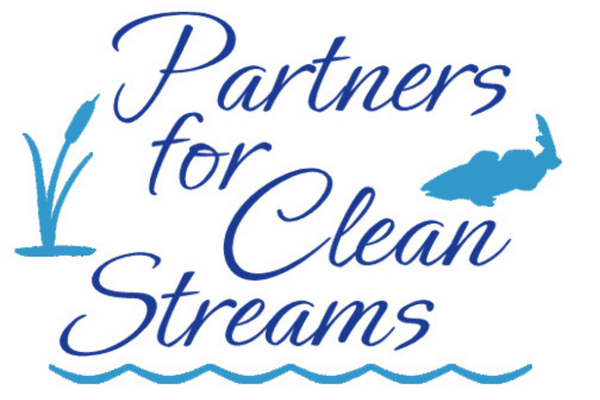
Partners for Clean Streams Becomes a Nonprofit
2007The Maumee RAP Committee determined in 2006 that their best path forward for efficiency, effectiveness, and sustainability, would be to form a separate nonprofit 501(c)3 organization and to leave the umbrella of TMACOG. In March 2007, Partners for Clean Streams (PCS) was officially granted non-profit status. It later became the designated facilitating organization for the Maumee AOC.
-
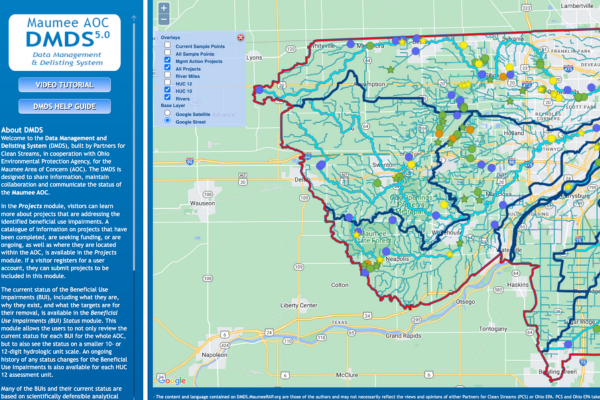
Data Management and Delisting System Created
2014To provide a dynamic and readily accessible way to view management action projects and BUI status, the RAP developed an online Data Management and Delisting System (DMDS). The system provides relevant data specific to BUIs, status of the BUIs throughout the AOC, projects in the AOC, and other resources.
-
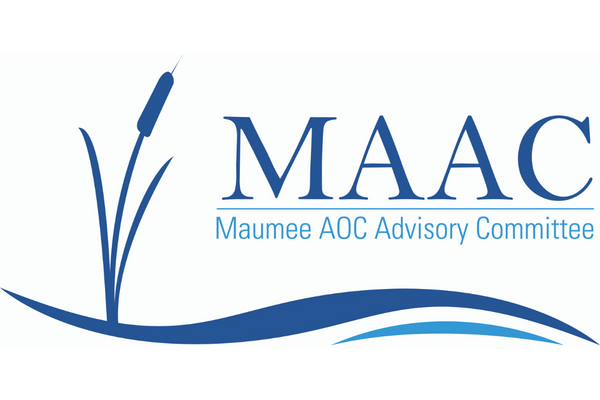
Maumee RAP becomes Maumee AOC Advisory Committee
2015he Maumee RAP reformed as a standalone committee under the new name, the Maumee AOC Advisory Committee (MAAC). The previous year, an updated State of Ohio framework document changed the preferred language from Remedial Action Plan (RAP) to Area of Concern (AOC) to better align strategic focus to a geographic area, rather than a “process or plan,” as RAP implies.
-
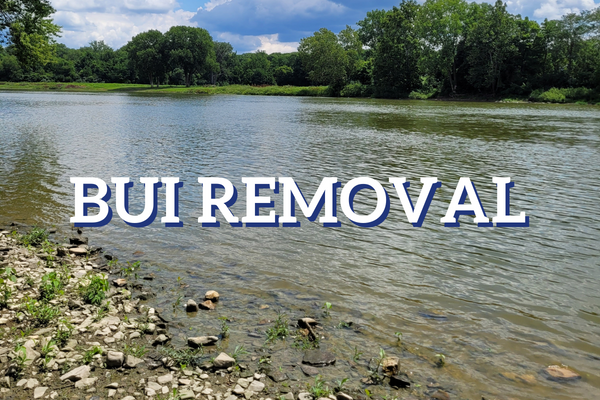
BUI 12, Added Costs to Industry and Agriculture, is Removed
2015U.S. EPA accepted the removal of BUI 12 on the recommendation of Ohio EPA and the MAAC. This means the Maumee AOC met the BUI 12 restoration target: that no additional costs (due to human activities within the AOC) are necessary to treat water prior to agricultural, commercial or industrial use.
-
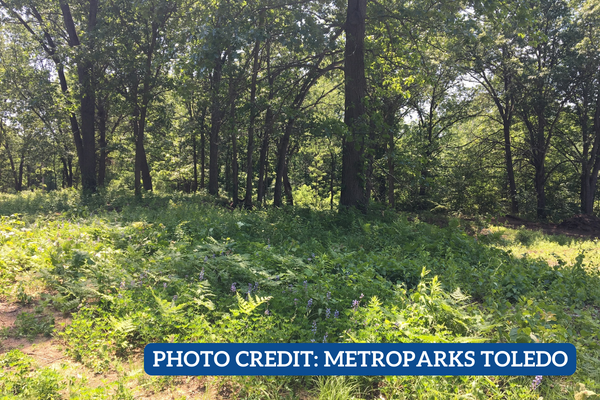
First Wildlife Habitat Management Action Project (WildMAP) is Completed
2018A habitat restoration project, led by Metroparks Toledo, involved the acquisition and restoration of just over 20 acres of oak savannah and oak woodland habitat near The Nature Conservancy’s Kitty Todd Preserve and Metroparks Toledo’s Oak Openings Metropark. WildMAPs contribute toward the delisting of BUI 14b, Loss of Wildlife Habitat.
-
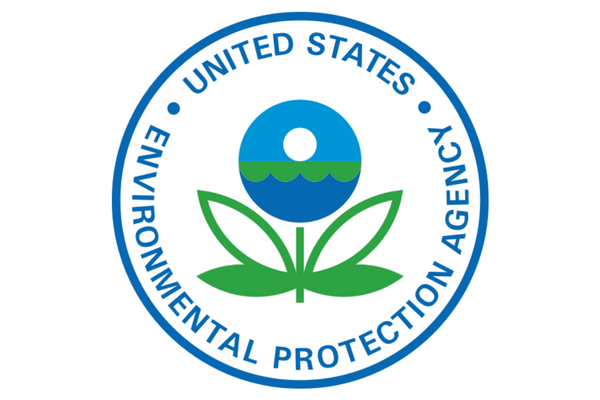
Management Action Project Lists are Finalized and Accepted by U.S. EPA
2021In order to address particular BUIs, like all AOCs, the Maumee AOC needed to come up with a list of projects. Once finalized, Maumee AOC had a list of 20 Wildlife Habitat MAPs, over 50 Aquatic Habitat MAPs, and 8 Sediment MAPs. However, many of these projects had achieved partial or full funding, and some even had work underway, before these lists were finalized.
-

BUI 1, Restrictions on Fish and Wildlife Consumption, is Removed
2022U.S. EPA accepted the removal of BUI 1 on the recommendation of the Ohio Lake Erie Commission and Ohio EPA, with support from the MAAC. This means the Maumee AOC met the BUI 1 restoration target: the fish and wildlife in all waters meet safe consumption thresholds used by the Ohio Department of Health in the Ohio Sport Fish Consumption Advisory.
-
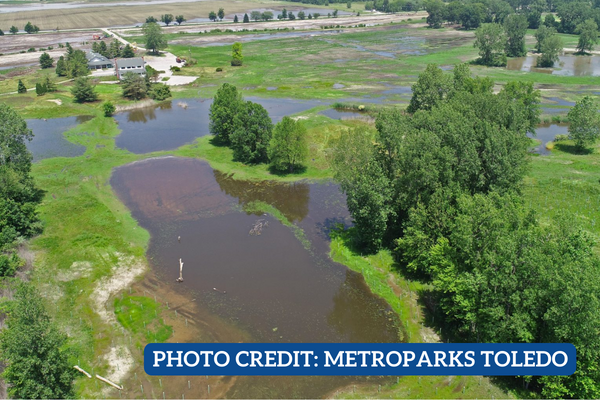
First Aquatic Habitat Management Action Project (AquaMAP) is Completed
2023This aquatic habitat restoration project, led by Metroparks Toledo, focused on restoring a stretch of Prairie Ditch at Secor Metropark, fostering new instream and floodplain habitat. AquaMAPs contribute toward the delisting of BUI 3a, Degradation of Fish Populations, BUI 6, Degradation of Benthos, and BUI 14a, Loss of Fish Habitat.
-

BUI 11, Degradation of Aesthetics, is Removed
2023U.S. EPA accepted the removal of BUI 11 on the recommendation of Ohio EPA and the MAAC. This means that conditions in previously impaired Maumee AOC waterways now meet restoration criteria; the Maumee AOC successfully addressed previously observed ongoing occurrences of sludge deposits, oil sheens, scum and other objectionable materials; specifically, materials that produce color, odor, or other nuisances.
Photo credits:
Unless stated otherwise, all photos and graphics are provided by Partners for Clean Streams.
